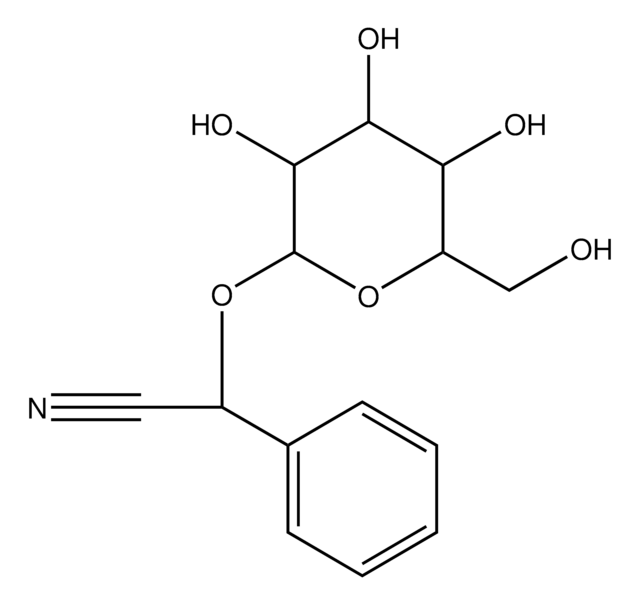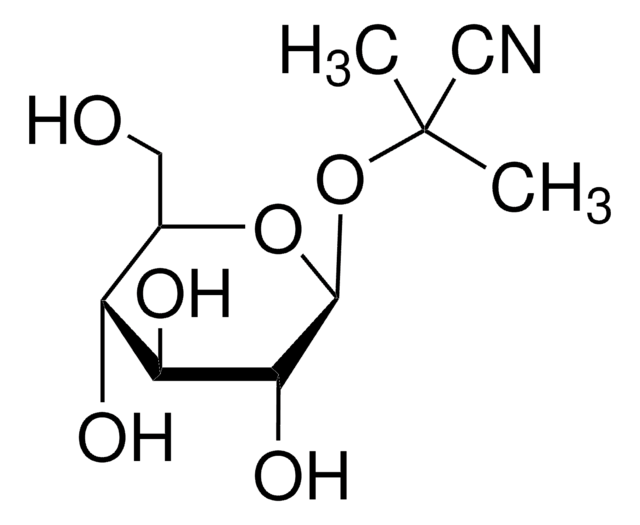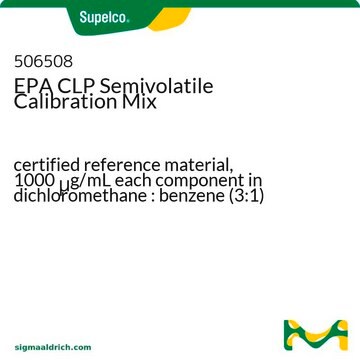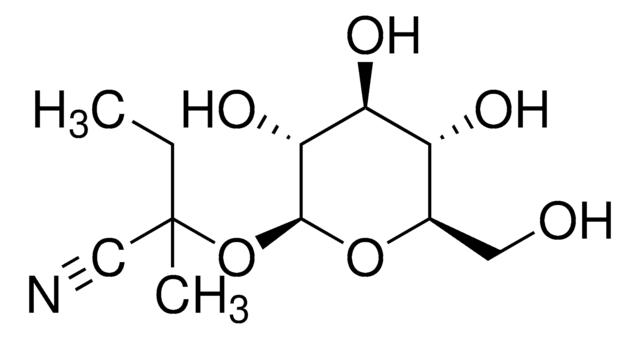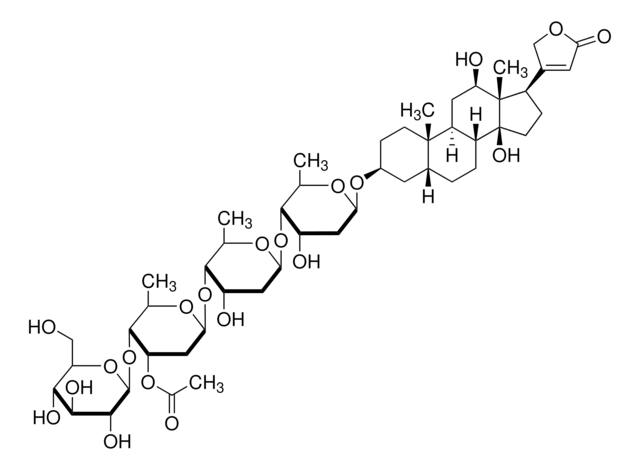07743
Dhurrin
≥95% (HPLC)
Synonym(s):
(S)-(β-D-Glucopyranosyloxy)(4-hydroxyphenyl)acetonitrile, (S)-4-Hydroxymandelonitrile β-D-glucoside
About This Item
Recommended Products
Quality Level
Assay
≥95% (HPLC)
form
powder or crystals
color
white to light brown
storage temp.
room temp
SMILES string
OC[C@H]1O[C@@H](O[C@H](C#N)c2ccc(O)cc2)[C@H](O)[C@@H](O)[C@@H]1O
OC[C@H]1O[C@@H](O[C@H](C#N)c2ccc(O)cc2)[C@H](O)[C@@H](O)[C@@H]1O
InChI
1S/C14H17NO7/c15-5-9(7-1-3-8(17)4-2-7)21-14-13(20)12(19)11(18)10(6-16)22-14/h1-4,9-14,16-20H,6H2/t9-,10-,11-,12+,13-,14-/m1/s1
InChI key
NVLTYOJHPBMILU-YOVYLDAJSA-N
General description
Packaging
Other Notes
Choose from one of the most recent versions:
Already Own This Product?
Find documentation for the products that you have recently purchased in the Document Library.
Active Filters
Our team of scientists has experience in all areas of research including Life Science, Material Science, Chemical Synthesis, Chromatography, Analytical and many others.
Contact Technical Service